I purchased this plant, Indigofera pseudotinctoria, better known as a False Indigo, this past spring at a local nursery. The species information I came across on the web after my purchase, as the nursery staff couldn't figure out what this unlabeled pot was either. I took a risk with it, but as the only one of it's kind at the nursery and a price was was willing to pay for an experiemtnt, it was worth it. I wasn't originally looking at the plant as potential bonsai stock. In fact, the thought didn't even cross my mind until I noticed the out of this world nebari and interesting lower trunk. This species is primarily a mass of runners that can spread to six feet in diameter and die back in the winter. A hardy perennial, they are considered more of a creeping ground cover than as a shrub. While I took no images of the nebari and lower trunk initially (I knew I would be able to get better images once I cleaned it up), I did take a quick snap shot of the plant in its nursery container before I laid a hand, or tool, on it.
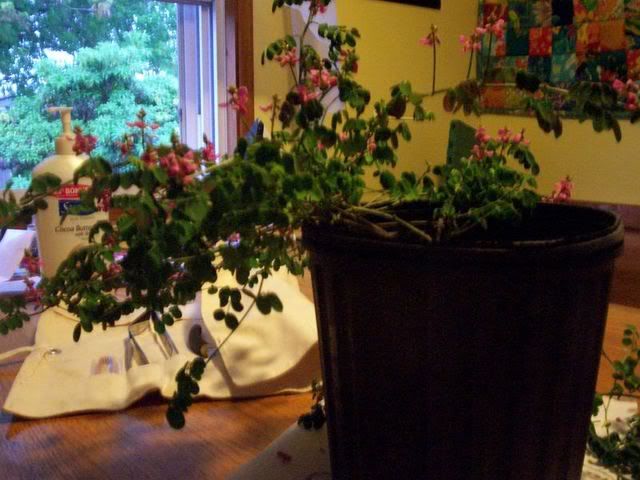
My initial assumption when I plopped it on the table to start the first styling was that this tree would simply *have* to be a cascade. All of the runners seemed to lend itself toward that and little else. But as the trimming started and I got a better look at the lower trunk, I realized just how unnecessary all of the hanging branches were to what, to me, would become the focal point of the tree. Rather than a larger size cascade, this would become something far smaller and focus on the roots, rather than the flowers and the foliage that initially attracted me to the plant. Armed with the knowledge that this would back bud like crazy, possibly even onto the woody trunk, I pruned heavily, leaving very little of the original left.
My apologies for the quality of the next image. My digital camera is so old the company no longer supports it, and sometimes the image that I need (or think I need) simply doesn't come out. I'm still working on learning how to make up for what the camera itself lacks, and hopefully will come through in the subsequent photos.
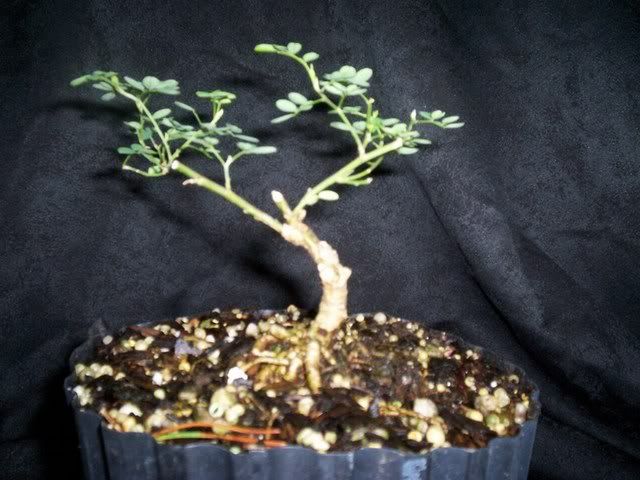
I let it grow out after that and had planned to leave it alone for the rest of the season.... until I saw just how prolific a grower this plant actually was. Within two weeks it was back out to almost half the size it had originally been. After that I started regular pruning to encourage ramification, pinching off new growth after it had reached three to four new sets of leaves at first, though now I'm at the point for this season where new growth gets one to two leave sets before I'm snipping them. I didn't want to pinch too agressively over the first season, as I was still unsure of the growth habits.... obviously not a problem here.
Root pruning was less aggressive than the top pruning had been. Being a tropical, I was less concerned about repotting a little late in the season. We'd had a very mild summer with a week and a half forcast of overcast and rain, so I took the opportunity, hoping to slow down some of the top growth with a reduction in the roots. Though the plant was potted into a gallon nursery pot, the roots took up barely half of that. Due to the dense, peaty soil, the bottom third of what there was had already started to rot. It turned out to be good timing, as I had considered leaving it in the nursery container until the following year. The plant likes it's feet wet, but that was just silly... It took some work to get the clay out of the upper parts of the root system that I wanted to be exposed, but well worth the effort. The "bark" on the tree and roots is very delicate, and with the discovery of a slime mold growing on some of the areas I wanted exposed as well, a soft bristled tooth brush was used to remove it.
I am unhappy with the pot choice, though at this point I have had mixed reviews on it. Regardless of the few people who actually like the heavier pot, it will not be staying. At the moment I am still keeping my eye out for something better suited for a repot in spring and a further reduction of the root system.
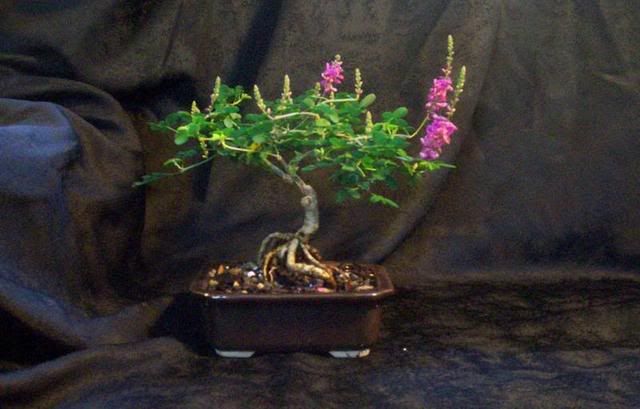
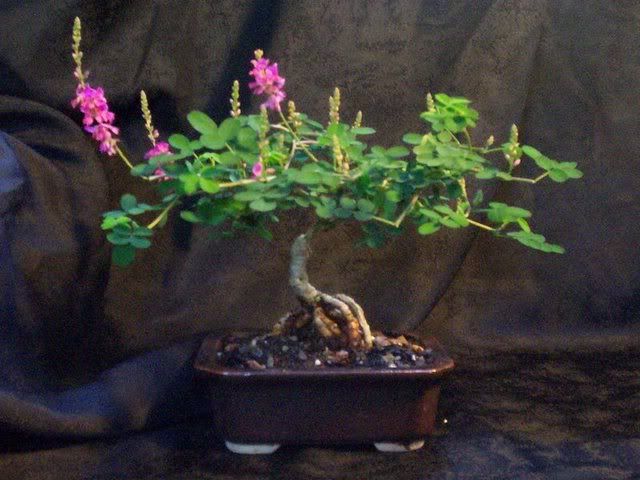
The first image is the front view that I have chosen, though the second image's "back" view is also, I think, acceptable. I prefer the first image as a front, but again, have had mixed opinions on that. The final height of the tree is five inches (12.7 centimeters) from the soil to the tip of the tallest flower..... four and a half inches (11.4 centimeters) to the top of the foliage.
The growth has indeed slowed down since the repot, and I'm not out there almost every day pinching back, though it's still happy and continuously flowering.
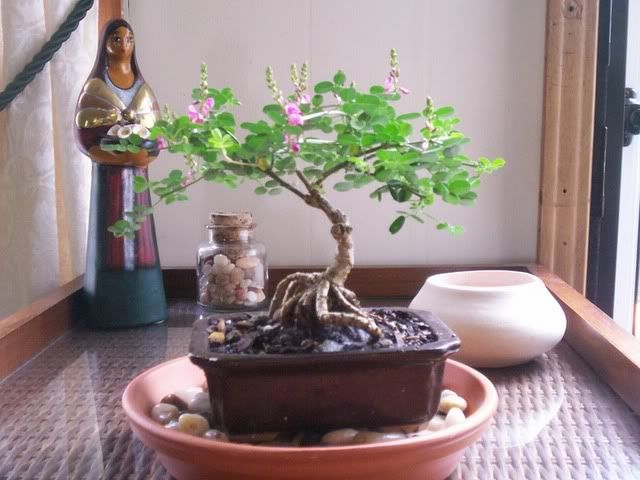
I have reservations on the longevity of this particular tree. The die back issues, the sheer oomph with which it bursts forth with growth just even in the single season it has been in my care.... the fact that what I had originally thought would take two years to achieve has come around in a single season astoundes me. The growth habits of this plant are so prolific, that it simply may not be suited, long term, to a bonsai pot. Even if I decide that it is unsuited for a bonsai next spring however, simply working on this little tree has been the highlight of my season this year. It will have been worth the time and effort, even if the tree proves more ephemeral than I had initially anticipated. I hope to get many years of enjoyment from it nonetheless, but we shall see.



1 comments:
Your blog keeps getting better and better! Your older articles are not as good as newer ones you have a lot more creativity and originality now keep it up!
Post a Comment